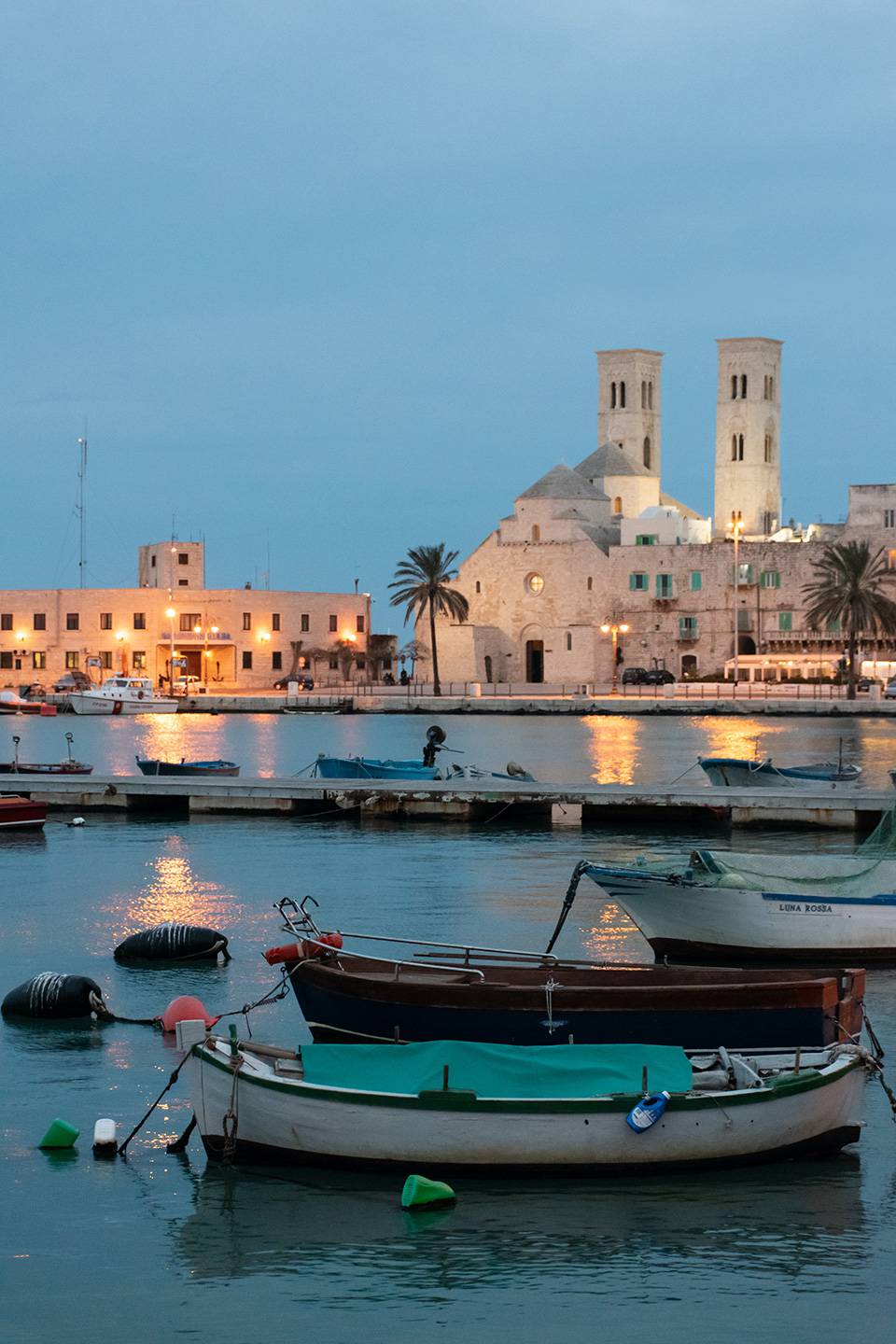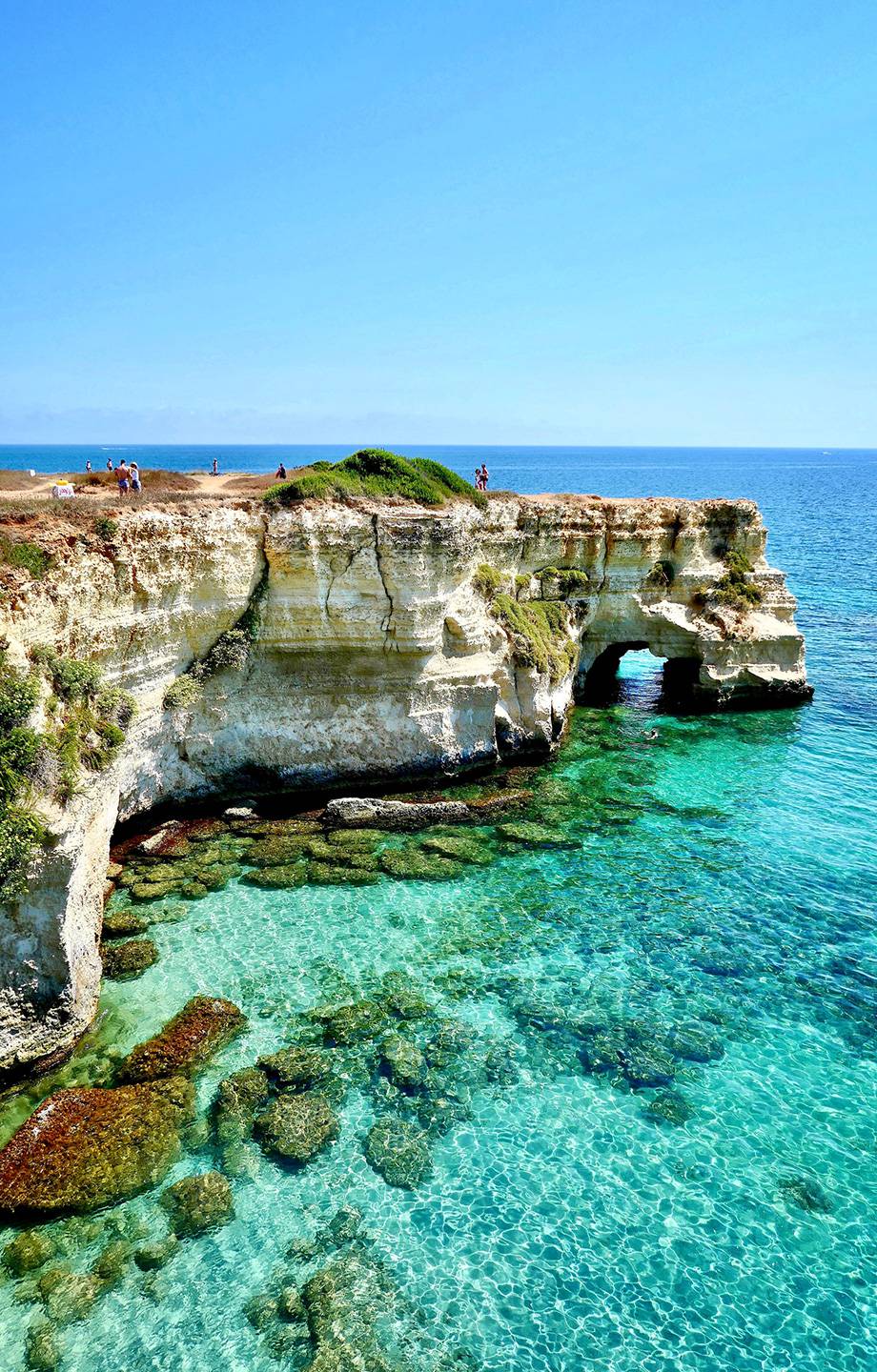Lecce and Surroundings
Litium 3 Lecce
WALKING AROUND LECCE
Also known as La Signora del Barocco and La Firenze del Sud, Lecce boasts a very ancient history, having known the dominion of different peoples, from the Romans to the Greeks, from the Messapians to the Spaniards. Each population has contributed to making the Salento capital one of the richest cities in history and culture in all of Puglia.
Lecce appears to be a gem in the eyes of first time visitors, a surprising rediscovery for those who have the pleasure of coming back, a rare wonder for those who have always lived there every day and never get tired of it.
The beauty of its historic center is enclosed between the three gates - Porta Napoli, Porta Rudiae and Porta San Biagio -, originally four with the gate of San Martino which led to the Marina of San Cataldo and which was demolished in 1800. They were all built from Charles V for the purpose of fortifying and defending the city and somehow we like to think that they are still there, imposing and majestic, perpetuating that purpose. From each of these doors you enter the alleys of the historic center, where the Baroque art, which spread in the seventeenth century during the Spanish domination, reigns supreme. The whiteness of the white stone of each building seduces, dazzling on sunny days and illuminating on dull days.
Walking through the alleys of the historic center you get the feeling that time has stopped. Many buildings still proudly display their coats of arms on the top of the doors, some choose to indulge in the sight of the curious through the grates of a gate, but only just enough to leave their eyes fascinated. Each meter is a discovery, a small square, a blind alley, a papier-mâché shop, a library with ancient manuscripts, a small Roman theater, a church, ten churches, hundreds of churches. Because you cannot say that you have seen Lecce if you have not taken the time to enter some of the countless baroque churches that open solemnly to the flâneurs, one a few meters from the other.
Just to mention some of the most beautiful: the Church of San Matteo shortly after the entrance from Porta San Biagio; the Church of Santa Chiara which stands on one of the squares of the Lecce nightlife; the Basilica of Santa Croce which with its rose window and Palazzo dei Celestini as a continuum represents the manifesto of the Lecce Baroque; the Church of Sant'Irene which stands at the beginning of a crossroads and which with its majesty almost seems to ask "And now which way will you decide to go?", and, if your choice falls on the road on the left, then from there little by little you would end up being amazed by the charm of Piazza Duomo, one of the most beautiful closed squares in Italy.
And just as all the roads lead to Rome, all the streets of the historic center of Lecce lead to Piazza Sant'Oronzo dedicated to the patron saint and surmounted by the column about 29 meters high at the top of which his statue shows imposing that with the raised arm and the three fingers on display, it seems to bless every passerby and that seems to protect the Roman Amphitheater behind him, or at least a third of what was the original structure which in all probability still remains hidden underground today.
The entire historic center, not to mention the entire city, still seems to be protected today by its Castle which rises a few steps from Piazza Sant'Oronzo, always wanted by King Charles V, and by the Urban Walls - recently restored and reopened to the public - who with their four meters high and a length of about 60 meters, "embrace" a part of Lecce and welcome those arriving from the main entrance of the city. A special welcome that reveals - but not too much - that the place where you have just arrived has something special and will be able to surprise, thrill, bewitch, thanks to its history, art and tradition that blend well with the modern aspect of Lecce, its lounge bars, cafes and typical shops ready to welcome you to offer you moments of relax and carefreeness.
Salento land between the two seas...
Salento, land between the two seas, the Ionian Sea and the Adriatic Sea, a coast over 250 km long made up of coves, cliffs and beaches close to a crystalline sea that is colored with all possible shades between blue and green.
But the Salento peninsula is not only sea, it is primarily art and history, testimony of a conquered territory but which has conquered at the same time different peoples, from the Romans to the Greeks, from the Byzantines to the Normans, each leaving an architectural, cultural, linguistic trace. Each trace has remained indelible in every town of the territory.
Like Gallipoli - the beautiful city - which with its castle, the ancient village perched on a small island of limestone origin and the small port where every morning at the first light of dawn the fishermen meet to sell the catch of the day, gives a image of other times; Otranto, the easternmost city in Italy, which recalls the colors of the most beautiful Greek cities, protected by its surrounding Aragonese walls; Castro Marina, an ancient fishing village, and Castro Superiore, the oldest village with many small houses placed one on top of the other, almost at random, a little in bulk; Santa Maria di Leuca - De finibus terrae - the only place in the world from which it is possible to admire both sunrise and sunset.
But it is above all the inland towns that best preserve the legacy of centuries of antiquity, those that not everyone knows but that everyone should visit at least once. Acaya. A few kilometers from Lecce and the Adriatic coast, not a real municipality but a small town that has just five hundred inhabitants but whose beauty is due to the fact that it is one of the very few fortified cities in the world still visible, closed by the great wall that also encloses the imposing castle with bastions, moat and two towers. Here time really seems to have stopped.
Calimera, the vital hub of Salento Greece, where a dialect linguistic branch close to the Greek language still survives today, Griko. Obviously here, more than any other country, the Greek influence has remained rooted, clearly visible in churches and monuments such as the Greek Stele, donated to Calimera by the city of Athens and dating back to the 4th century BC.


A land that never ceases to amaze you...
Galatina, a picturesque village enriched by important architectures such as that of the 16th century Palazzo Ducale, the Clock Tower built on the occasion of the unification of Italy and dedicated to Vittorio Emanuele I, King of Italy and, finally, - but not in order of importance - the Basilica of Santa Caterina di Alessandria, one of the most illustrious examples of Romanesque and Gothic art in Puglia, with its vastness of frescoed pictorial cycles everywhere inside that place it second only to the Basilica of San Francesco d'Assisi.
Maglie, in a central position in the lower Salento which over the years has made it a great economic and cultural center, is in fact one of the countries where traditional craftsmanship still represents one of the main activities, first of all embroidery and ironwork. beaten. An unmissable event is that of the Taste Market which, every year in August, attracts thousands of visitors ready to be delighted by the various itineraries and tastings linked to numerous local products.
Nardò, on the Ionian side, is one of the oldest villages in Salento. Its origin is to be placed around the year 1000 by the Messapi and owes its particularity, not only to the beauty of its numerous historic buildings, but also to the skill of the many artisans who have certainly not lost their hand over time and they still find today in the streets of the town intent on working glass or carparo stone.
Presicce, one of the most beautiful villages in Italy, city of oil and hypogea, where the real protagonist is the yellow gold to which a festival is dedicated every year. The underground oil mills to be seen are different, but the “li vecchio curti”, or the ancient courtyard houses, typical peasant dwellings of the area, are also worth a visit.
These are just some of the many enchanting corners to discover Salento, the land where you never cease to be amazed, where one moment you are taking a bath in crystal clear waters, the next moment you sip a cocktail watching the sun disappear into the sea and the much later you find yourself eating warm pittule in the light of the limestone. Because Salento is not made up of places, but of continuous wonderful discoveries during the journey from one place to another.

